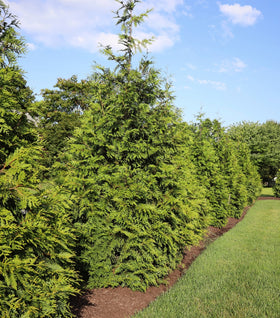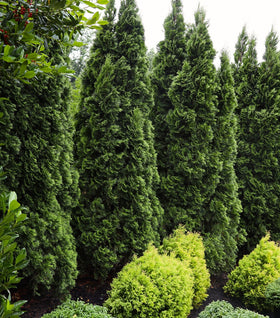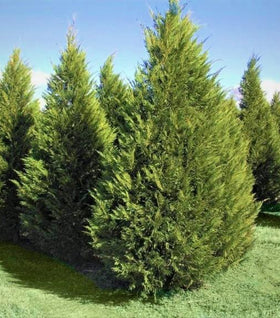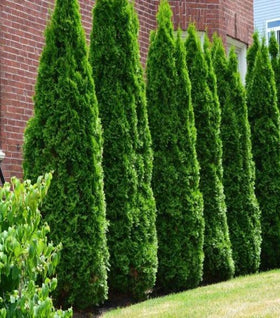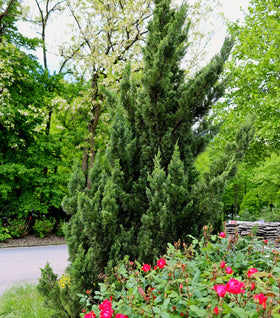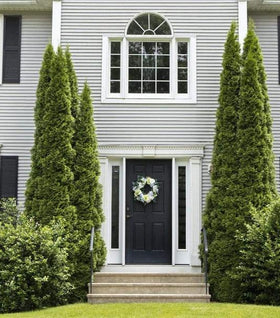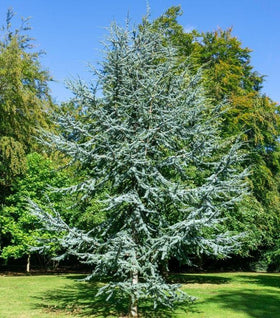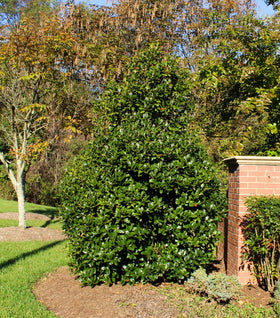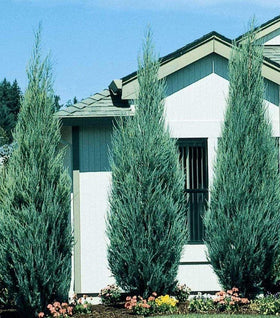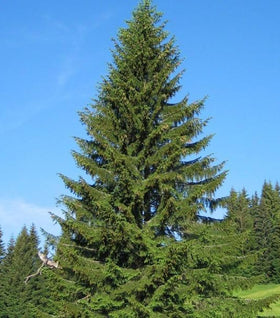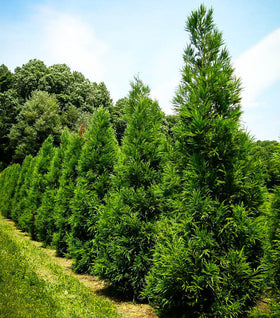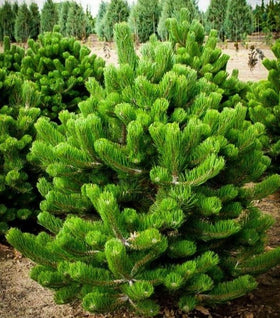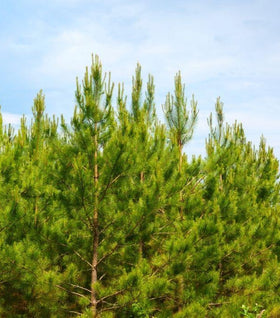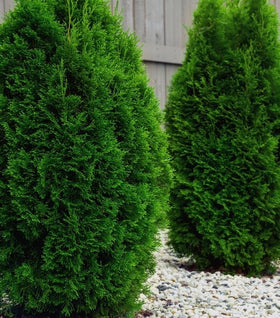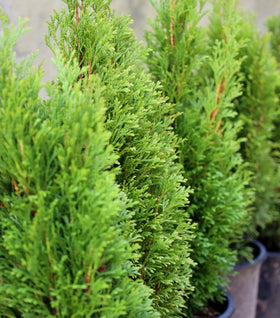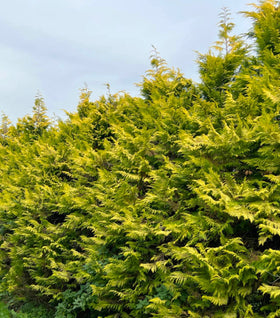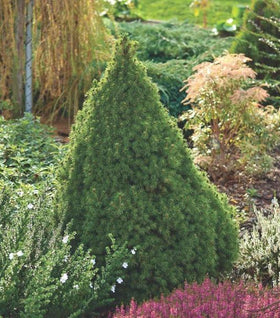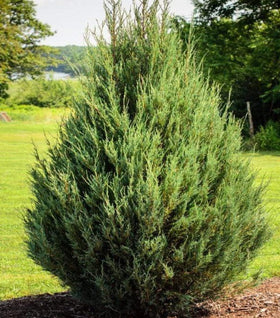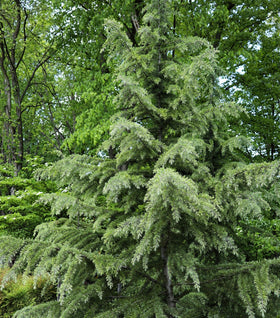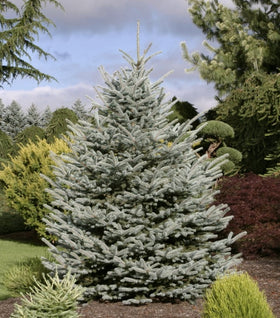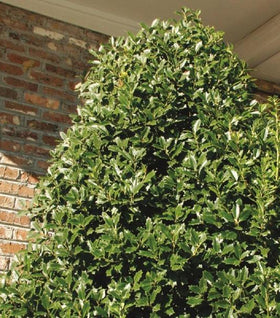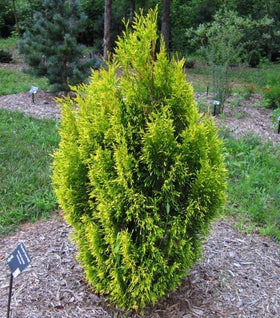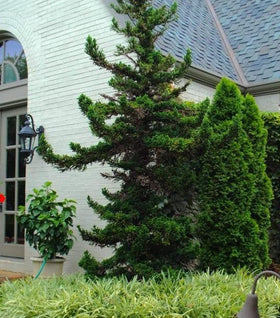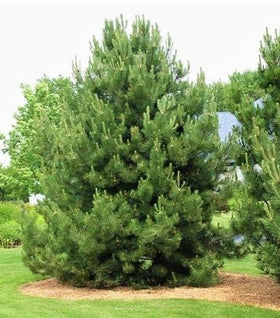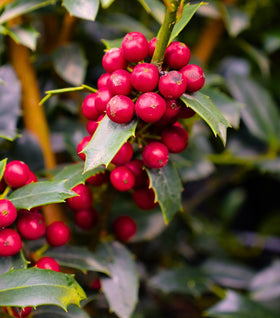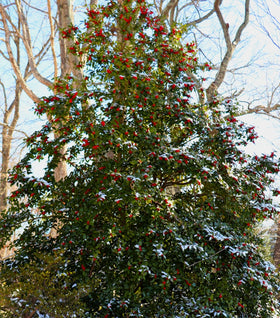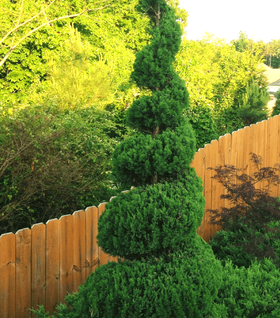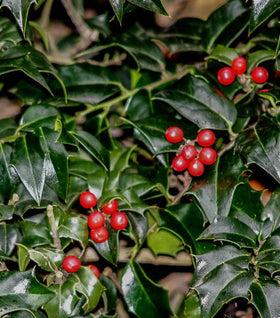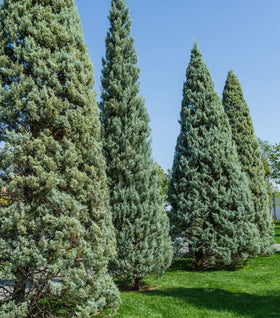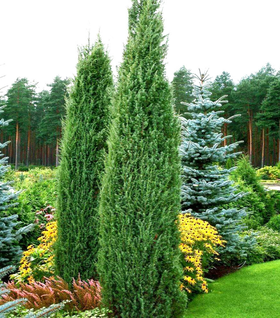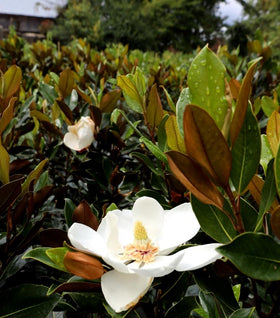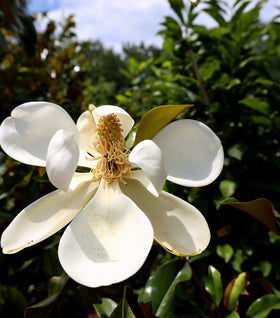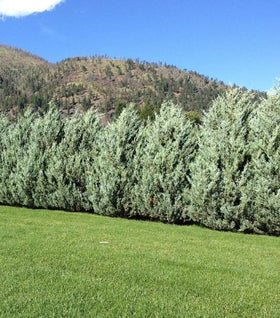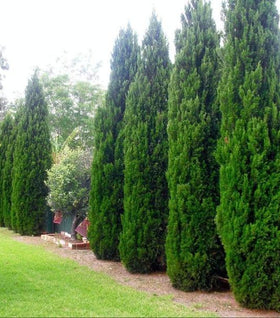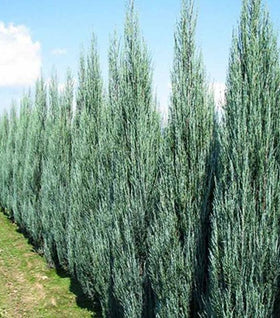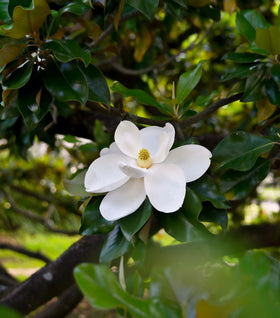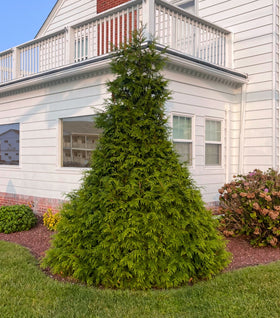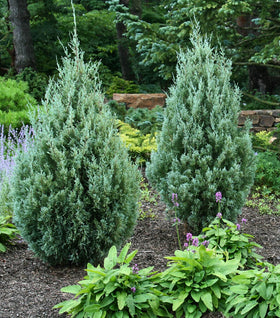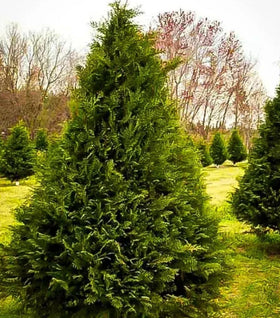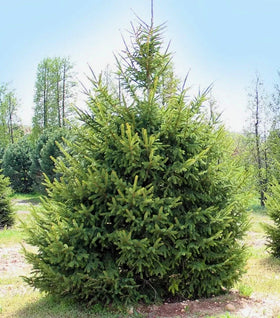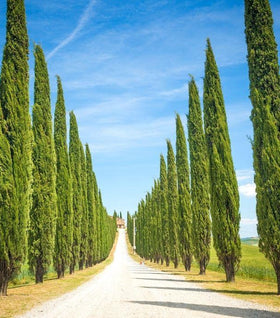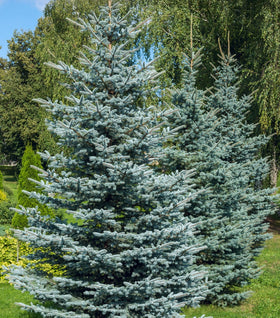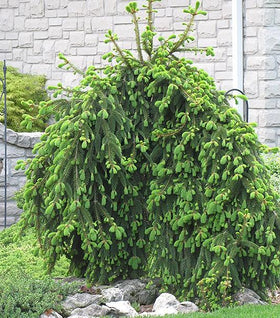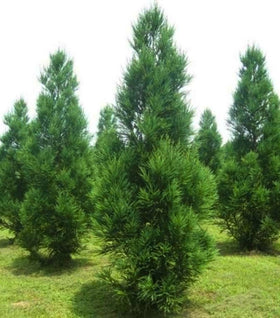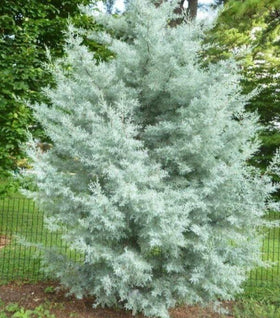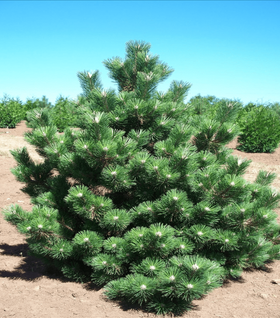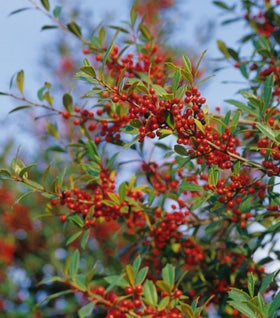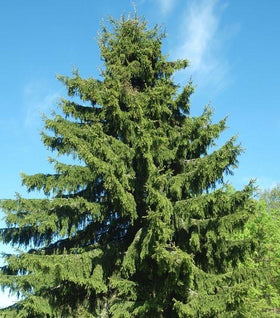Buy Evergreen Trees Online
Evergreen Trees for Year-Round Privacy and Lasting Landscape Beauty
Evergreen trees are the ultimate investment in four-season privacy, structure, and curb appeal. From the moment they’re planted, these resilient evergreens provide instant landscape value — creating natural screens, noise barriers, and windbreaks that grow fuller and stronger each year. Whether you’re looking to buy evergreen trees online for fast privacy or to add a touch of texture and color to your foundation plantings, Garden Goods Direct offers nursery-grown selections shipped directly from our greenhouses to your door. Our hand-picked collection includes customer favorites like Leyland Cypress, Emerald Green Arborvitae, and Blue Point Juniper, each chosen for their proven performance, hardiness, and adaptability in home landscapes across the U.S.
Every evergreen in our collection has been selected for both beauty and reliability — because we know your landscape should look its best every day of the year. These low-maintenance evergreen trees thrive in a range of climates and soil types, maintaining lush color through snow, sun, and heat. Whether you prefer the golden tones of Forever Goldy Arborvitae, the silvery-blue needles of Baby Blue Spruce, or the stately form of Blue Atlas Cedar, you’ll find a tree that complements your design vision and thrives with minimal care. Shop our collection below to discover fast-growing evergreen trees for privacy, year-round greenery, and guaranteed quality backed by Garden Goods Direct’s "We Grow Together Promise" — because strong roots start here.
Evergreen Trees That Bring Structure, Privacy, and Year-Round Appeal
Evergreen trees create instant impact in the landscape by providing permanent color, structure, and screening. These reliable trees retain their foliage year-round, providing a living backdrop that complements every garden style, from formal to naturalized. With options ranging from towering pines and cypresses to dense arborvitae and spruces, there’s an evergreen for every space and soil type.
Diverse Growth Habits and Seasonal Beauty in Every Variety
Our evergreen trees feature a wide variety of textures, ranging from the soft needles of the White Pine to the dense sprays of the Leyland Cypress. Many cultivars, such as Emerald Green Arborvitae and Cryptomeria Radicans, maintain vivid green hues even in winter. Some varieties, such as Blue Spruce, add silvery tones that stand out against snow or autumn colors. Their consistent shape and foliage ensure visual appeal every month of the year.
Landscape Benefits — Natural Privacy, Wind Protection, and Design Balance
Evergreens serve as living architecture in residential and commercial landscapes. Plant them as windbreaks, noise buffers, or property dividers for natural privacy without fencing. They also provide crucial habitat for birds and pollinators while stabilizing soil and reducing erosion on slopes. When combined with deciduous trees and flowering shrubs, evergreen trees create balanced, four-season landscapes with lasting value.
Low-Maintenance Strength and Reliable, Long-Term Performance
These trees are known for their resilience and adaptability. Once established, most evergreen trees require minimal care, including occasional watering during droughts and annual fertilization. Their sturdy root systems anchor slopes and tolerate a range of soil conditions, making them low-maintenance and long-lived additions to any property. Choose Garden Goods Direct for nursery-grown evergreens that arrive healthy, acclimated, and ready to thrive.
-
Leyland Cypress Tree: A rapid‐growth favorite for tall privacy screens—ideal when you need height fast.
-
Emerald Green Arborvitae Tree: Classic upright arborvitae with dense foliage—a reliable choice for year‐round greenery.
-
Forever Goldy Arborvitae: Adds a warm golden tone to the landscape—great for accenting corners or foundation plantings.
-
Blue Point Juniper Tree: Cold‐hardy and tolerant—perfect for northern zones or challenging sites.
-
Baby Blue Spruce Tree: Compact form with striking blue‐green needles—works as a feature tree or smaller screen.
-
Colorado Blue Spruce Tree: Larger specimen spruce with dramatic coloration—ideal for prominent landscape positions.
-
Blue Atlas Cedar Tree: Architectural evergreen with bold texture and mature size—makes a statement.
-
American Pillar Arborvitae Tree: Narrow, upright arborvitae—excellent when space is tight but you still want height.
How should I plant evergreen trees?
Plant evergreen trees in a location that receives full to partial sun and has well-drained soil. Dig a hole twice as wide but no deeper than the root ball. Remove the container, loosen the roots, and position the tree so the top of the root ball is level with the ground. Backfill with native soil, gently firming it to remove air pockets. Then, water thoroughly to help the roots settle. Adding a 2–3-inch layer of mulch will conserve moisture and reduce weeds.
Avoid planting too deep or covering the trunk flare with soil, as this can restrict oxygen and stunt growth. If planting multiple trees for privacy, align them evenly and face their best side toward the viewing area. Early spring or fall are ideal planting seasons when the weather is mild and the soil is workable.
How often should I water evergreen trees after planting?
Water newly planted evergreens deeply two to three times per week for the first month, depending on the weather. The goal is to keep soil consistently moist but never waterlogged. During the first growing season, check the soil weekly and water when the top few inches begin to dry. Established evergreens usually need only supplemental watering during extended droughts.
During hot, dry summers, morning watering is best to minimize evaporation and prevent stress. Reduce frequency in fall and winter, but water occasionally if the ground isn’t frozen to maintain hydration through the dormant season.
When should I fertilize evergreen trees?
Fertilize in early spring, before new growth begins, using a slow-release, balanced fertilizer such as 10-10-10 or a formula designed explicitly for evergreens. Apply evenly around the drip line, keeping granules away from the trunk. A second light feeding in late summer can support sustained color and density.
Avoid fertilizing too late in the fall, as this may encourage tender growth that is vulnerable to frost. Organic options, such as compost or aged manure, can also enrich the soil and improve its structure.
When and how should I prune evergreen trees?
Prune lightly once a year to maintain shape and promote healthy branching. Late winter or early spring is ideal before new growth flushes. Remove any dead, damaged, or crossing branches first, and trim for form as needed. Avoid heavy pruning into old wood on arborvitae and junipers, as new growth may not return.
For pyramidal evergreens, maintain a slightly tapered shape wider at the base to help shed snow—clean pruning tools between cuts to prevent disease spread.
How fast do evergreen trees grow, and how large do they get?
Growth rates vary widely by species. Fast growers like Leyland Cypress and Green Giant Arborvitae can reach 3–5 ft per year, while Blue Spruce and Eastern White Pine average 1–2 ft annually. Mature heights range from 15 ft for compact arborvitae to over 60 ft for pines and cypresses.
Soil quality, watering, and sunlight influence performance — trees planted in optimal conditions reach mature size faster and maintain denser foliage.
Are evergreen trees deer-resistant or evergreen year-round?
All evergreen trees in this collection retain their foliage year-round, though shades may deepen in winter. Many species, such as junipers and spruces, are naturally deer-resistant due to their texture and aromatic needles.
In high-pressure deer areas, pairing evergreens with known deer-resistant plants, such as boxwoods or hollies, offers an extra layer of protection.
Do evergreen trees attract pollinators or birds?
Yes, many evergreen trees provide shelter, nesting sites, and food sources for birds. Conifers like pine and cedar produce seeds that attract finches and chickadees, while dense branching offers refuge during storms and cold weather.
While not classic pollinator magnets, evergreens play a vital ecological role by sustaining wildlife habitat throughout winter when other plants are dormant.
Can I plant evergreen trees on slopes or in containers?
Absolutely. Their fibrous root systems make evergreens excellent for stabilizing slopes and controlling erosion. Compact varieties such as Dwarf Alberta Spruce or Junior Giant Arborvitae also adapt well to large containers.
Ensure proper drainage and use a high-quality potting mix for container plantings. Regular watering and occasional feeding keep potted evergreens vibrant year-round.
How far apart should I space evergreen trees?
Spacing depends on mature width and desired density. For privacy screens, space fast-growing arborvitae or cypress 3–5 ft apart center-to-center. Larger trees like pines or spruces require 10–15 ft between trunks.
Proper spacing ensures healthy airflow, reduces disease risk, and allows each tree to reach its full potential without crowding.

